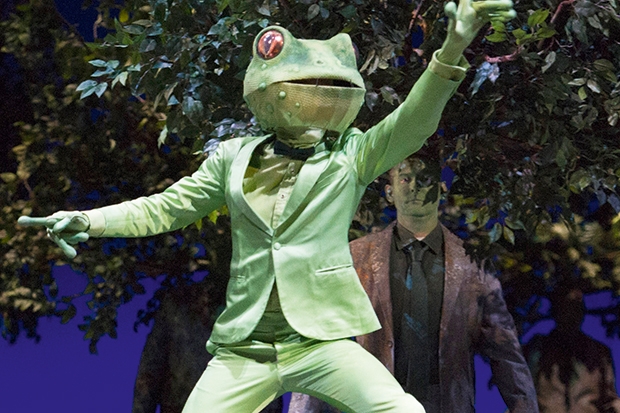When I saw the first performance of this production of Ravel’s two operas at Glyndebourne three years ago, I thought it was the nearest thing to operatic perfection I had witnessed. But this revival is even finer. Whereas I concluded last time that L’heure espagnole was fundamentally an old-time bore that goes on for far too long — only 50 minutes, but it seemed much longer — this time I found it absorbing from start to finish, though I still think it is no funnier than most of what used to be called dirty jokes. The decisive difference, I think, is the conducting of Robin Ticciati (or was it where I was sitting, the front row of the circle as opposed to the centre of the stalls?). In 2012 the conducting was so discreet that the orchestra did next to nothing to add to the fun. This time round the explosive precision, reminiscent of Maazel’s classic recording, is where most of the humour lies, though that is not what caused most of the audience’s laughter. After the first ten minutes of the piece, it’s clear where it is going to go; it’s just that the muleteer Ramiro is too modest or stupid to realise his charms, until he’s propelled ‘sans horloge’ up to Concepción’s bedroom. The main suspense for the spectator is whether Ramiro — in this case the excellent Etienne Dupuis, though he isn’t quite the right vocal type — will manage to get the grandfather clocks up and down the stairs without hitting something in the monstrouslyovercrowded room.
Danielle de Niese, the star of both operas, is ideally sexy (no surprise there) and sings with much fuller tone than I expected, giving Concepción dignity as well as frustrated rage. It’s hard to believe that this opera used to be regarded as misogynistic, given that the three males represent various kinds of inadequacy or conceit, while Concepción is the one person who is intelligent, resourceful and full-blooded. But the characters aren’t, perhaps, really the point. In this stunning set, originally designed by two Frenchwomen and adapted by a third, what leaps out is the number of clocks and what they are doing, visually and aurally, and the rest of the confusing furniture. I wish the audience was given a chance to explore the stage, which, as Ravel must have wanted, grabs and retains most of the attention. As for the sex, it’s all well out of sight or hearing; and Ravel’s sexual status is a vexed subject, all the more so since, in his most recent book, Robert Craft claims that Ravel and Stravinsky had an on-off affair for several years.
Ravel’s interest centres on the big question that both L’heure espagnole and L’enfant et les sortilèges raise. It occurred to me that the two operas that deal with man’s relation to the natural world — this second one of Ravel’s and Janacek’s The Cunning Little Vixen, which, I’m delighted to see, is to be revived at Glyndebourne next year — were written at exactly the same time, though they are utterly different in their attitudes. Janacek is movingly and amusingly interested in the similarities and differences between human beings and living creatures, while Ravel is just as interested in the Teapot and the Cup, the Chair and the Armchair, Fire and Arithmetic as he is in the Tomcat and the Cat, the Owl and the Dragonfly, and so on. In other words, Janacek is in an odd way realistic and amoral, while Colette, the masterly librettist, and Ravel are moralistic and completely unrealistic. The world that the Child has maltreated turns against him comprehensively until s/he (the gender is never specified, though normally the Child is taken to be a male sung by a soprano) bandages the Squirrel’s wounded paw, whereupon all the other characters, animate and inanimate, agree that ‘Il est bon, l’enfant.’
The Child, I can’t help feeling, manages to get into their good books rather easily, considering his earlier tantrums and their outcome, with the exquisite wallpaper ripped down, and disconsolate shepherds and shepherdesses lamenting their dislodgement; and the many other manifestations of irritability and petulance. Still, the broad point is made, though I am still eager that the Child should treat animals better than furniture.
For this opera the costume designs are by Laurent Pelly, the director of genius, with Jean-Jacques Delmotte, and they are of a spellbinding ingenuity and loveliness that make one gasp; how often can that be said of opera productions now? Everything about this production, musically and visually, is so magical that the fact that it is a moral tale matters as little to us as one suspects it did to its creators. Danielle de Niese is just as perfect as the definitely masculine Child as she was as Concepción, and if there is a moment of emotion in the whole evening it is in the last minutes, as s/he lies humiliated but enlightened, while the chorus of Trees and the rest of his erstwhile victims sing that strangely potent chorus, which seems to come from another musical and dramatic world, yet is clearly the only way this piece can end.






Comments